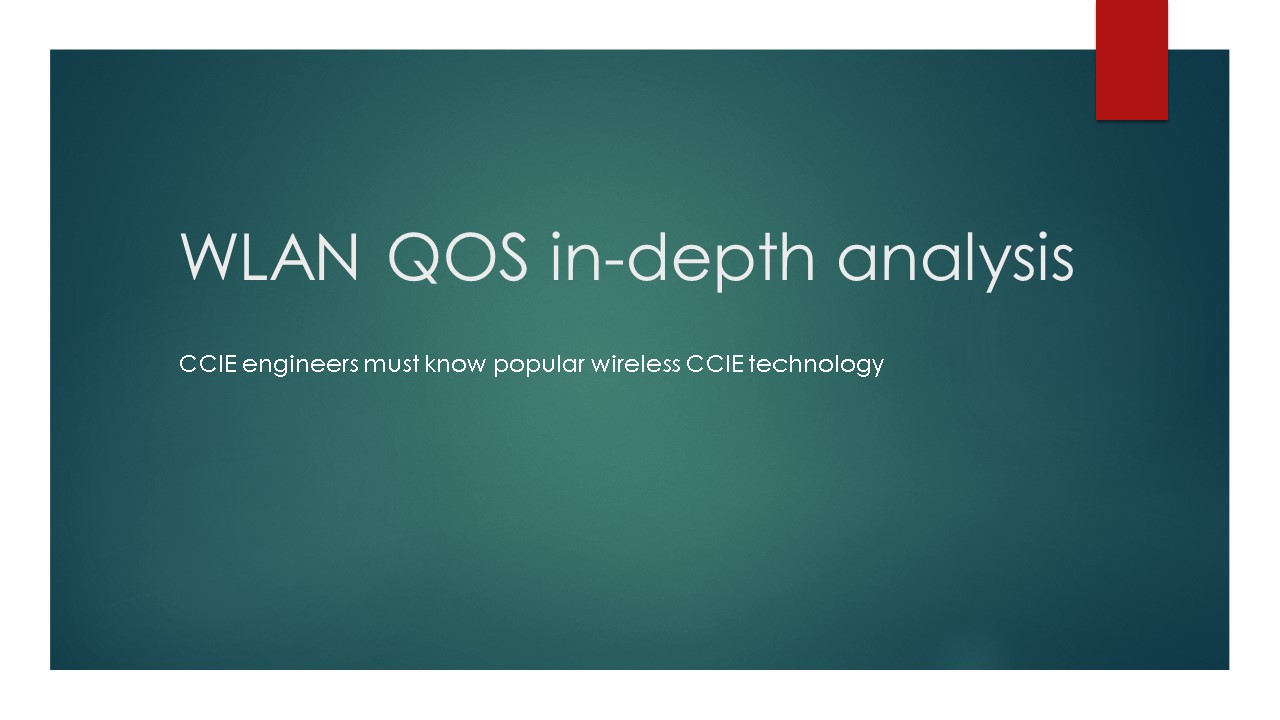The 802.11 WLAN network provides users with wireless access services with fair competition for wireless resources, but different application requirements have different requirements for the network. The original 802.11 network did not provide a mechanism to prioritize services and could not provide different applications. Different quality access services. When traffic congestion occurs on the network, service packets that require priority processing (such as voice packets) and ordinary packets (such as those that browse the web) will be discarded with the same probability. This and the relatively complete QOS mechanism of the wired network cannot be well connected, and can no longer meet the needs of practical applications.
EEE 802.11e adds QoS features to the WLAN system based on the 802.11 protocol. The standardization time of this protocol is very long. In this process, the Wi-Fi organization has defined WMM (WMM) to ensure the interoperability between WLAN equipment provided by different WLAN manufacturers. Wi-Fi Multimedia (Wi-Fi Multimedia) standard. The WMM standard enables WLAN networks to provide QoS services.
WMM agreement:
In the 802.11 protocol, DCF (Distributed Coordination Function) stipulates the access method for APs and clients to use CSMA/CA (Carrier Sense Multiple Access with Collision Avoidance). Before occupying the channel to send data, the AP or client will monitor the channel. When the channel idle time is greater than or equal to the specified idle waiting time, the AP or client randomly selects the back-off time within the contention window for back-off. The device that ended the backoff first competes for the channel.
The WMM protocol defines a set of EDCA parameters for channel competition for each type of AC. It distinguishes the ability to access channels of different priorities, thereby ensuring that channel resources are allocated according to data flow priority. The meaning of EDCA parameters is as follows:
AIFSN (Arbitration Inter Frame Spacing Number, arbitration frame gap number), in the 802.11 protocol, idle waiting time (DIFS) is a fixed value, and WMM can set different idle waiting time for different ACs, the greater the AIFSN value, the user’s idle The longer the waiting time. The shorter the waiting time, the greater the chance of acquiring the channel;
ECWmin (Exponent form of CWmin, minimum competition window index form) and ECWmax (Exponent form of CWmax, maximum competition window index form) determine the average backoff time value, the larger these two values, the longer the user’s average backoff time;
TXOP (Transmission Opportunity, transmission opportunity), the maximum time that a user can occupy a channel after a successful competition. The larger the value, the longer the user can occupy the channel at a time. If it is 0, only one message can be sent after each channel occupation. If a frame is too large to be sent within a TXOP, it must be fragmented.
CAC access mechanism:
The CAC admission function requires that clients only send packets with high-priority ACs if allowed by the AP. Otherwise, they can only use low-priority ACs to ensure the bandwidth of clients in high-priority ACs. High priority AC includes: Voice and Video data streams; low priority AC includes: Best-effort and Back-ground data streams. The control strategy of the AP is as follows:
Admission strategy based on channel utilization:
Calculate the occupied high-priority AC channel occupation time and the channel time occupied by the requested client within 1 second. If the sum of the two is less than or equal to the maximum channel utilization rate configured by the user, the stream is allowed to access; Otherwise refuse.
Admission strategy based on the number of users:
The current number of high-priority AC clients plus the number of requested clients. If it is less than or equal to the maximum number of CAC users configured by the user, the stream is allowed to access; otherwise, it is rejected. If a client accesses both Voice and Video service streams, it is calculated as one access client.
SVP service:
The SVP service implements the processing function of the SVP packet with the Protocol ID of 119 in the IP header, and puts it in the designated AC queue. Since SVP stipulates that SVP messages do not need to be backed off randomly, when there are only SVP messages in the corresponding AC queue, both ECWmin and ECWmax can be set to 0.
WLAN QOS traffic speed limit:
In order to make limited network resources play better and serve more users better, the device needs to support the traffic speed limit function. When the data flow meets the promised rate, the data packet is allowed to pass through; when the data flow does not meet the promised rate, the data packet is discarded.
Average rate: The average speed of the allowed flow, also called the committed information rate.
Burst rate: the maximum traffic allowed per burst, also called committed burst size. The set burst size must be greater than the maximum packet length.
ACK strategy:
The protocol specifies that there are two ACK strategies: Normal ACK and No ACK.
The No ACK (No Acknowledgment) strategy is a strategy that does not use ACK messages for reception confirmation in the process of wireless message interaction when communication quality is good and interference is low. The No ACK strategy can effectively improve the transmission efficiency, but if the ACK is not used, if the communication quality is poor, even if the receiving end does not receive the sending packet, the sending end will not retransmit, so the packet loss rate will increase The problem.
The Normal ACK strategy means that for each unicast message sent, the receiver must send an ACK for confirmation after successfully receiving the sent message.
IE-LAB provides valid materials(accurate dumps) to help you pass your CCIE. For the written, we have valid workbooks that cover all real exam questions. You can easily pass the exam, usually 7 days’ preparation in enough. For the Lab exam, we will offer valid workbooks(real exam), rack which is the same as real exam, one to one support, professional tutor and timely update.
This article is exclusively published by James from IELAB.NETWORK and cannot be reproduced without permission.
We have huge promotion going on right now, this is your best chance to get accurate written and lab materials.
Get any two Cisco written dumps for 150USD only.
Deposit 150USD now and enjoy 50% off for CCIE next-level lab.
Get 100% accurate CCIE/ CCNP/CCNA/HCIE dumps in IELAB .
Please follow us if you like our articles.
visit us: http://ielab.network
Facebook : https://www.facebook.com/ielab.network/
Linkedin: https://www.linkedin.com/company/ielabnetwork/
WhatsApp: +8617782638871
Skype:live:ielab.anna


